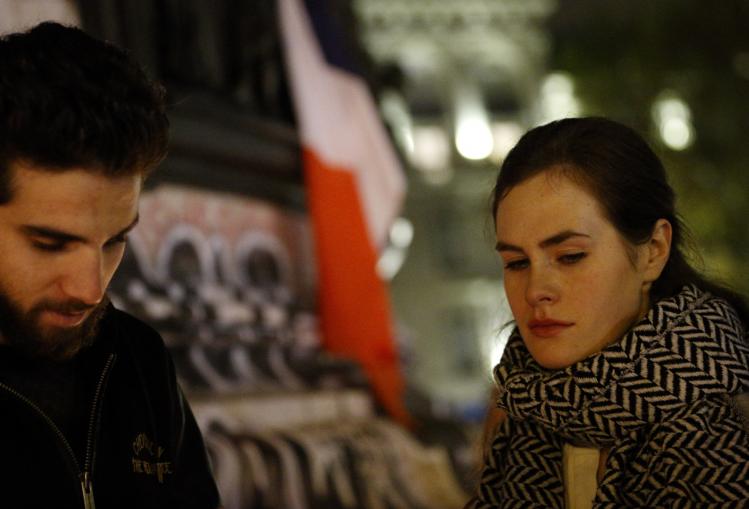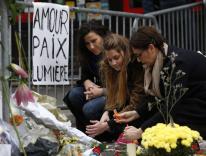
One would rather not live in a world where regular people are reading Gilles Kepel, a professor at Sciences Po, an elite university on the Left Bank of Paris. Under better circumstances, the scholarship of the French political scientist and longtime expert on jihadist movements would be confined to dour cliques of his fellow academics and counter-terrorism specialists.
Instead, Paris’ twin terror attacks of 2015—at Charlie Hebdo and a Jewish supermarket in January, then at a string of nightclubs, restaurants and the Stade de France in November—injected Kepel’s work with gruesome relevance. Published just two months after the latter wave of carnage, Terreur dans l’Hexagone: Genèse du djihad français garnered widespread acclaim in the author’s shell-shocked homeland. Now, more than a year later, we have the English translation.
At the heart of the new edition is the notion that developments in France serve as a warning to the rest of Europe and North America. Understanding the rise of jihadism in the Republic, Kepel writes in the introduction, equips one to better conceptualize its counterparts in the West. As he puts it, “the French situation is exemplary and premonitory.”
This is hard to know. Either way, Kepel offers the most cogent, nuanced, and complete portrait of the French context to date. He outlines the social fractures that have left swaths of alienated youth vulnerable to the call of holy war; he traces the rise of its latest iteration, driven by a horizontal organizing model and an obsession with accelerating ethno-religious divides in the West; and, finally, he unpacks the roots of specific terrorist networks in France, increasingly nourished by war in Syria.
This is vital work. At a time when most public considerations of terrorism are colored by nefarious political ambitions—Trump, Putin, Erdogan, and many others are to thank for that—sensitive and good-faith analyses like Terror in France are all the more valuable.
Kepel distinguishes between what he calls three “generations” of jihadism. After the first one’s unexpected triumph in Afghanistan in the 1980s and a series of unsuccessful follow-ups in Algeria, Egypt, and Bosnia, September 11 marked the arrival—and apogee—of the second wave. Rather than waging war in majority Muslim lands, al-Qaeda’s leaders believed in taking the struggle to bastions of Western modernity through a series of spectacular and centrally-organized attacks. These assaults would, in theory, expose the weakness of the infidels, driving Muslims to rally behind the cause of holy war. It didn’t work out so well.
As a result, the so-called third generation has opted for a different strategy. According to Kepel, it more or less follows the thought of Abu Musab al-Suri, the Syrian-born, naturalized Spanish author of The Global Islamic Resistance Call, a sixteen hundred-page manifesto published online in January 2005. Al-Suri’s vision of jihad is best summed up by his formulation, “a system not an organization”—a sort of insurrectionary anarchist response to the Bolshevism of Bin Laden and company. Using small networks of alienated young Muslims hungry for vengeance against their countries of birth, it seeks to heighten religious divides in the West. And it’s ready-made for the era of message boards and apps, offering a seemingly quick path for the otherwise isolated to join a collective struggle.
Kepel is at his best when he unpacks the evolution and appeal of jihadist thought with finesse. Still, there are some serious problems with the text.
His focus on Islam—and particularly the evolution of its Salafist fringes—can be blinding at times. In the same way a geographer might view topography as the single greatest influence on a country’s political culture—or a psychoanalyst could perceive international relations to be a battle of egos—he tends to see religion as the driving force of Muslims’ civic engagement. This leads to some unbalanced readings of recent events.
For example, Kepel suggests the November 2005 riots in the suburbs of Paris were basically Islamist in character. While he acknowledges that the deaths of two teenagers fleeing arrest triggered the conflict, he argues that it was police tear-gassing of a mosque three days later that ensured the unrest reached a mass scale. This episode plays a key role in his narrative: In preparing the marriage between youth disaffection and radical Islamism, the riots supposedly laid the groundwork for the third generation of jihad.
The argument is a stretch. The brown and black teenagers who spent weeks burning cars and launching Molotov cocktails at the cops in Seine-Saint-Denis expressed themselves through the time-honored language of riot. In responding to social exclusion through the destruction of property, they have far more common with their counterparts in London in 2011, or Baltimore in 2015, than they do with, say, the two Kouachi brothers who massacred the staff of Charlie Hebdo. The fact that the riots occurred around the same time as the publication of al-Suri’s manifesto or the jailing of a handful of key French-born jihadists does not necessarily mean, of course, that the events are linked.
Similarly, Kepel argues that in the aftermath of 2005, Islamic institutions grew at the expense of political and civic groups of the left. Religiosity may well be on the rise among angry young French people of foreign descent, but so too are grassroots organizations opposing racism and police violence. Unfortunately, the book features little to no mention of them. (Some of these groups have gained momentum after the original French version appeared in January 2016, but they could have been acknowledged in the updated version.) In any case, Keppel wrongly omits the October 2015 “March for Dignity and Against Racism,” a demonstration organized by dozens of locally-based anti-racist groups on the tenth anniversary of the riots.
Similar initiatives have taken off since then. In response to the death of Adama Traoré, a twenty-four-year-old found asphyxiated at a police station in a northern suburb of Paris shortly after his arrest, thousands took to the streets of France’s largest cities demanding “Justice pour Adama.” An organization dedicated to the “Truth for Adama” cause now holds regular events, organizing a benefit concert in February with some of the country’s most popular rappers. And in March, seven thousand participated in a “March for Justice and Dignity” in Paris, organized by the families of victims of police violence. After reading enough Kepel, one could be forgiven for doubting the obvious: French Salafists are incapable of mobilizing on this scale. Ties between the French left and the country’s ethnic minorities, though tested, remain far deeper than the author seems willing to acknowledge.
Without a doubt, the surge of Islamic radicalism in France is real and worthy of concern. French Muslims make up seven hundred of the three thousand Europeans fighting for ISIS in Syria, a greater share than any other nation. Understanding the roots of these militants’ alienation and their new allegiance is a worthwhile task. And as in his previous work, Kepel conducted impressive amounts of field research to back up his insights, earning the right to tease detractors for their inability to speak Arabic. But it still feels like an important part of the story is missing: the real discrimination faced by French Muslims, shaped by the nation’s brutal colonial heritage. Its ideological underpinnings—France as a universal idea—remain closely intertwined with republican identity today. The state claims not to see religious difference, all the while enacting laws like the 2004 ban on religious headscarves in public schools and the 2010 ban on the full veil.
Acknowledging this legacy as well as current forms of oppression encountered by French Muslims is not to excuse the tiny minority who become terrorists, but to better understand them. Unfortunately, Kepel all too often considers discrimination in the context of how Islamists use it to their advantage. The word “Islamophobia” appears exclusively in quotes, as if it were completely made-up, existing only in the minds of reprehensible Daesh sympathizers and useful idiots on the left. This is excruciatingly difficult to believe in a country that last summer tried to ban the burkini.
The recent presidential elections also put a major dent in Kepel’s narrative of growing social fracture. The way he sees it, the 2012 presidential election was the apex of the fling between the left and a growing bloc of politically-conscious Muslim voters. (In the first round, Socialist François Hollande won the vote of 57 percent of self-identified Muslims; in the run-off against then-President Nicolas Sarkozy, he won 86 percent of such voters, according to one poll.) Since then, Kepel argues, Muslims in France have become more conservative, turned off by left-wing legislation like same-sex marriage and increasingly looking toward religion to frame their political engagement.
In fact, in the 2017 race, the “Muslim vote” remained firmly on the left, arguably even more so than in recent years. According to an IFOP poll of the first round of the presidential election, a plurality of self-identified Muslims, about four in ten, backed Jean-Luc Mélenchon of Rebellious France, an independent candidacy endorsed by the Communist Party—giving him a level of support among Muslim voters nearly double that of the general voting population. Mélenchon’s platform called for inscribing abortion and gender-identity transition rights in the Constitution in addition to economically populist demands like reducing the work-week and hiking welfare benefits. A significant number of Muslims also opted for social liberal Emmanuel Macron (24 percent) and Socialist Benoît Hamon (17 percent). On the other hand, just 10 percent supported social conservative François Fillon, a vocal critic of same-sex marriage.
If French Muslims were truly drifting rightward as Kepel suggests, one would, at the very least, expect to see traces of this phenomenon at the presidential ballot box. There are none to be found. What’s more, Mélenchon’s outsized appeal among this share of the population recalls a basic fact about politics, no matter the religious convictions of the group in question: If campaigns are directed at the basic needs of socially-excluded people, they tend to gravitate toward them.
A few want to blow themselves up in the name of ISIS. But when the vast majority of French Muslims think about politics, they’re still driven by more mundane ambitions like decent jobs and affordable housing. Sometimes, amid all the anxiety and angst about terror, things like this can get lost.
Terror in France
The Rise of Jihadism in the West
Gilles Kepel
Princeton University Press, $29.95, 240 pp.
Please email comments to [email protected] and join the conversation on our Facebook page.
Previous Story
The Democrats’ Religion Problem
Next Story
Letter from Rome
